Space
14 strange things we have sent into space
Published
3 months agoon


strangeAdjective: Not normal; odd, unusual, surprising, out of the ordinary.
Adjective: unfamiliar, not yet part of one’s experience.
Adjective: Outside of one’s current relationship; unfamiliar.
Adjective: Having the quantum mechanical property of strangeness.
Adjective: Of an attractor: having a fractal structure.
Adjective: Belonging to another country; foreign.
Adjective: Reserved; distant in deportment.
Adjective: Backward; slow.
Adjective: Not familiar; unaccustomed; inexperienced.
Adjective: Not belonging to one.
Verb: To alienate; to estrange.
Verb: To be estranged or alienated.
Verb: To wonder; to be astonished at (something).
Noun: outside of one’s current relationship.
Noun: A strange quark.
Adjective: Not normal; odd, unusual, surprising, out of the ordinary.
Adjective: unfamiliar, not yet part of one’s experience.
Adjective: Outside of one’s current relationship; unfamiliar.
Adjective: Having the quantum mechanical property of strangeness.
Adjective: Of an attractor: having a fractal structure.
Adjective: Belonging to another country; foreign.
Adjective: Reserved; distant in deportment.
Adjective: Backward; slow.
Adjective: Not familiar; unaccustomed; inexperienced.
Adjective: Not belonging to one.
Verb: To alienate; to estrange.
Verb: To be estranged or alienated.
Verb: To wonder; to be astonished at (something).
Noun: outside of one’s current relationship.
Noun: A strange quark.
14 strange things we have sent into space
Space is increasingly being filled with man-made objects. Most of these objects are what you would expect to find in space, such as active spacecraft, astronaut equipment, or space debris. But there are also strange things that humans have placed in space, and of course it was not always intentional.
From dinosaur bones and a big disco ball to musical instruments and gorilla clothing, here are 14 of the strangest things that humans have sent into space, citing Live Science.
Tesla car and its astronaut driver
 The camera shows SpaceX’s Starman mannequin and Elon Musk’s Tesla Roadster flying above the Earth.
The camera shows SpaceX’s Starman mannequin and Elon Musk’s Tesla Roadster flying above the Earth.
On February 6, 2018, billionaire Elon Musk decided to use his car and a Starman mannequin as a test payload for the first mission. the Falcon Heavy rocket’s first mission, SpaceX sent the billionaire’s cherry Tesla Roadster into space.
The Tesla carrying Starman was originally supposed to be in orbit around Mars, raising concerns that the vehicle could become a potential biothreat and contaminate the planet if it crashed on its surface. But the vehicle drifted too far from the Red Planet and is now trapped in an orbit around the Sun with an orbital period of 557 days.
You can track the car and its passengers in real time on the website whereisroadster.com you can track. By May 2023, the Tesla Roadster has completed about 3.4 orbits around the sun and traveled more than 4 billion kilometers; This means that the mentioned car has exceeded its warranty more than 73 thousand times. Starman stopped sending images to Earth a long time ago. Astronomers predict that the car and its passengers may have suffered significant damage.
Manhole valves (by atomic explosions)
 Test site in Nevada during Operation Plumbab
Test site in Nevada during Operation Plumbab
Between May 28 and October 7, 1957, the US military conducted a series of nuclear tests in the Nevada desert under the name Operation Plumbab. These tests consisted of 29 nuclear explosions, two of which were called Pascal A and Pascal B, conducted underground to test whether radioactive fallout could be contained. Pascal A was conducted on July 26, during which an atomic bomb was detonated at the bottom of a 152-meter-deep hole covered with a 10-centimeter-thick iron cap.
Before his death in 2018, Robert Brunelli, an astrophysicist at Los Alamos National Laboratory in New Mexico and chief scientist for the Pascal experiments, told Business Insider that the force of the explosion sent the manhole into the sky. Brunelli expected the cap to return to Earth, but it was never found.
To investigate what happened to the valve, Brunelli repeated the experiment on August 27, 1957. This time, Brunelli recorded Pascal’s experiment B with a camera that took pictures at a rate of one frame per millisecond. The test showed that the cap can reach a maximum speed of 201 thousand kilometers per hour. This speed is about five times the escape speed of the Earth (the speed required to escape the Earth’s gravitational field) and it shows that both caps have probably made their way into space.
14 strange things we have sent into space
Hair of US Presidents (coming soon)
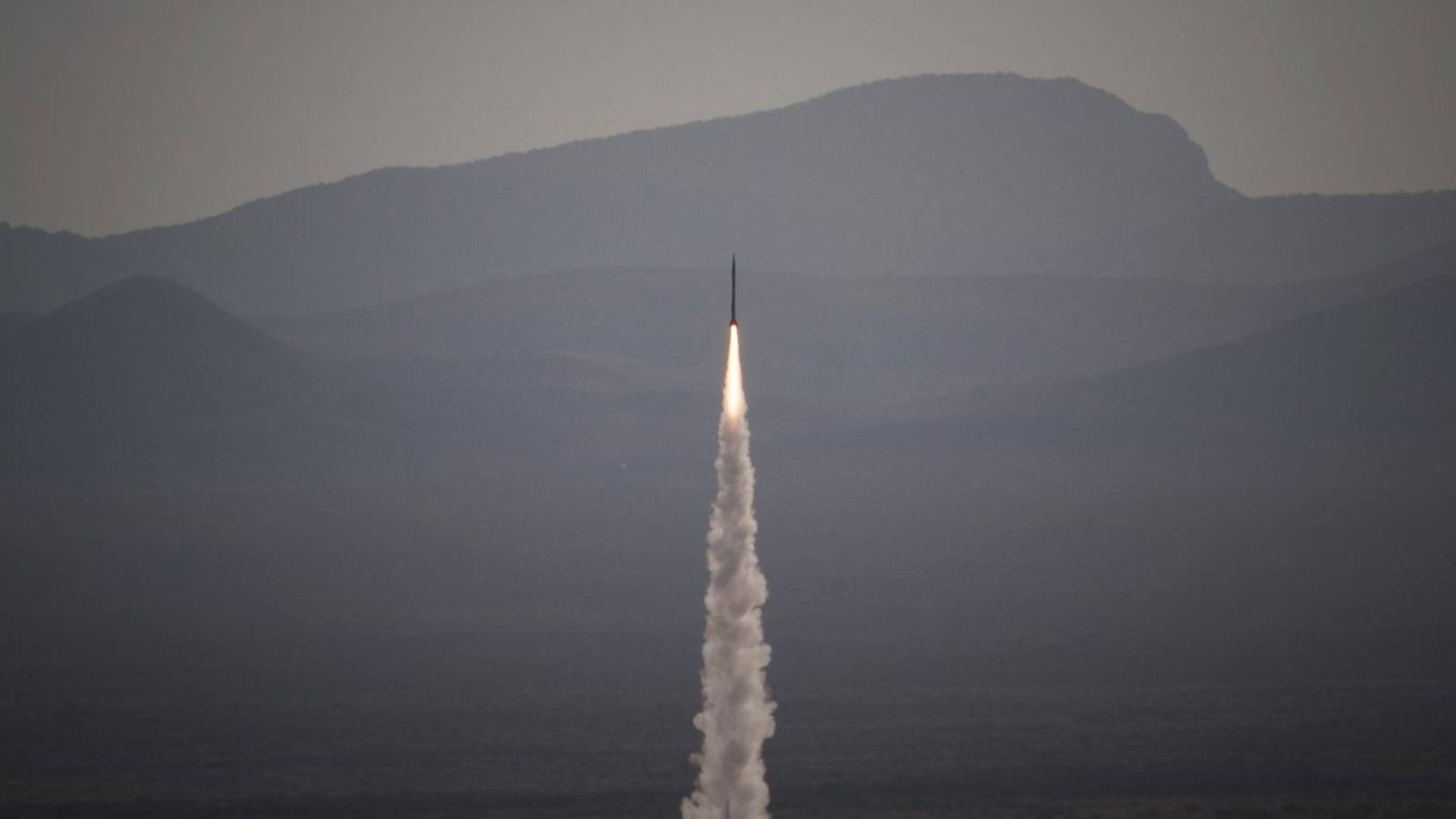 Celestis Goddard Flight rocket was launched on May 20, 2011.
Celestis Goddard Flight rocket was launched on May 20, 2011.
On President’s Day 2023 (February 20), Celestis, a Texas-based company that specializes in space burials, announced that it will launch strands of hair from former US presidents on an upcoming mission called Enterprise from Cape Canaveral, Florida.
Genetically verified hair samples from George Washington, John F. Kennedy, Dwight Eisenhower, and Ronald Reagan will be aboard the Enterprise mission, along with the remains of others, including some of the cremated remains of “Star Trek” creator Jen Roddenberry. The spacecraft will eventually go beyond the outer reaches of the solar system.
Giant disco ball
 The Star of Humanity was put on display before it was launched into space.
The Star of Humanity was put on display before it was launched into space.
On January 21, 2018, NASA’s Rocket Lab secretly launched a multi-faceted mirror into space during one of its test flights. This unusual object, which was called the “Star of Humanity”, was about 1 meter wide and had 65 reflective plates on its surface. Humanity’s star quickly orbited the Earth, reflecting enough sunlight to the Earth’s surface to be visible to the naked eye. The Star of Humanity was designed to be a clear symbol and reminder of how vulnerable our place on Earth is.
However, the big disco ball’s time in space was short. The bright orb re-entered Earth’s atmosphere on March 22, two months after launch and about seven months earlier than expected, The Atlantic reported.
The Star of Humanity is not the first disco ball to be launched into space. Project Starshine, operated by the US Naval Research Laboratory, launched three similar objects between 1999 and 2002, each remaining in orbit for more than a year. Japan also launched a mirror-coated satellite named Ajisai in August 1986, which is still in orbit.
14 strange things we have sent into space
Lego pieces
 Japanese astronaut Satoshi Furukawa with his ISS model in 2012
Japanese astronaut Satoshi Furukawa with his ISS model in 2012
Lego has a long history in space. Construction kits can help children build realistic rocket models. But these famous plastic parts have also reached space and even found their way into the spacecraft that they are modeled on.
In 2012, Japanese astronaut Satoshi Furukawa built a replica of this orbital settlement during his stay on the International Space Station. It took him over two hours to build this model, which is a remarkable feat considering the lack of gravity. In 2019, Lego also sent a conceptual model of the moon base connected to a special balloon into space.
In addition, three custom Lego sculptures are currently orbiting Jupiter on NASA’s Juno probe, which was launched in 2011 to explore this gas giant and its moons. These statues are Juno and Jupiter (Roman gods) as well as Galileo who discovered the four large moons of Jupiter.
Jeff Bezos (and other ordinary citizens)
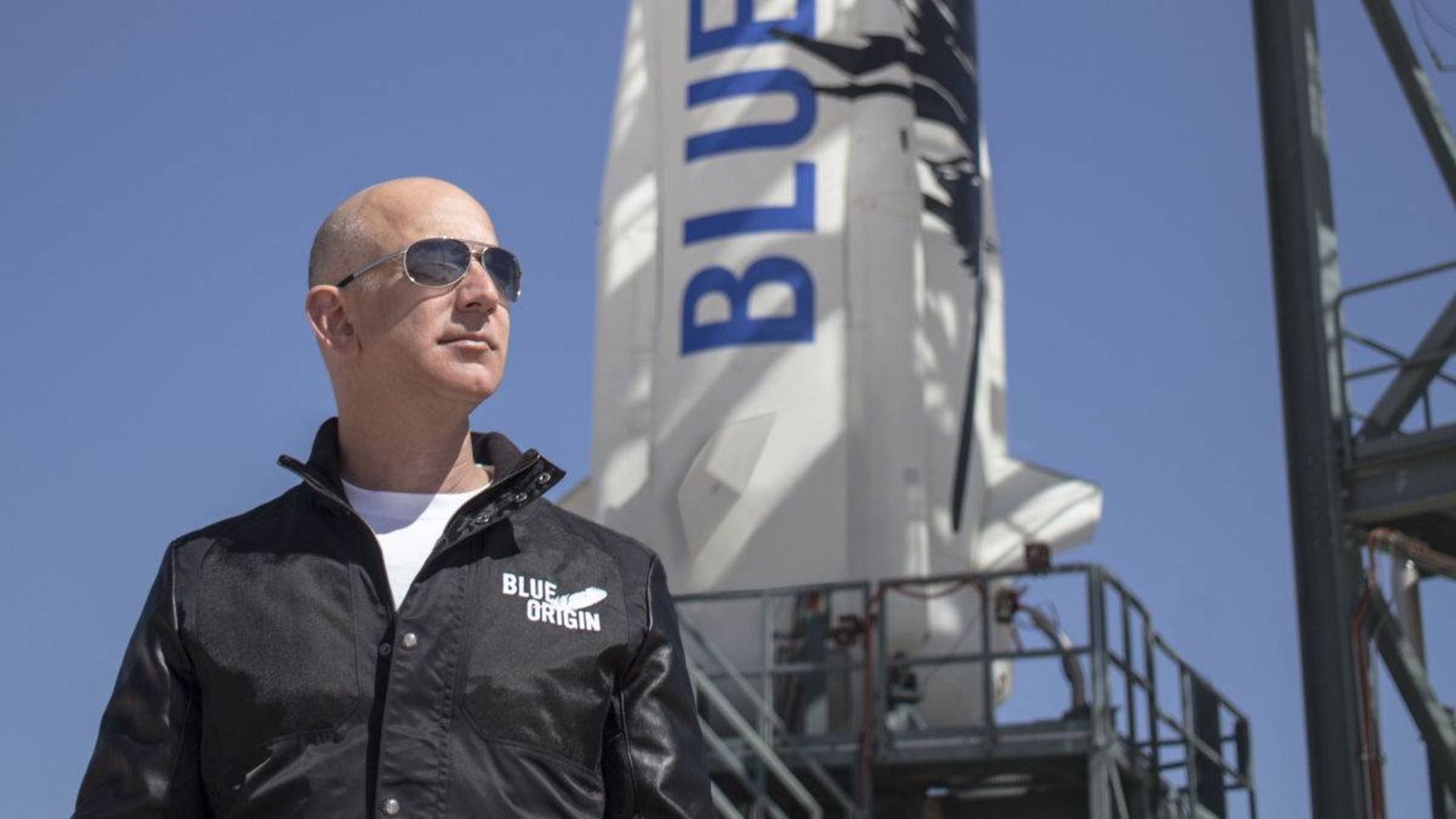 Bezos vs Blue Origin’s NewShepherd missile
Bezos vs Blue Origin’s NewShepherd missile
We do not intend to call Jeff Bezos a weird person by including him in this list. The strange thing about his trip to space is that the group that went with him were all ordinary citizens who were doing suborbital flights.
On July 20, 2021, Bezos, along with pioneering aviator Wally Funk, physics student Oliver Damon, and Bezos’ younger brother Mark, were launched aboard Blue Origin’s NewShepherd rocket from the company’s launch site in West Texas. The flight lasted only about ten minutes, but the crew capsule exceeded the Karmann line (the boundary between the Earth’s atmosphere and outer space), which is 100 kilometers above sea level, and finally fell gently to the ground.
But whether Bezos and the rest of the crew, who were ordinary citizens, can be considered astronauts or not, there is a debate and disagreement. Some experts believe that the flight training level of the crew is very low and the lack of expertise deprives them of this title; while others have to make much more effort to achieve it.
Dinosaur bones
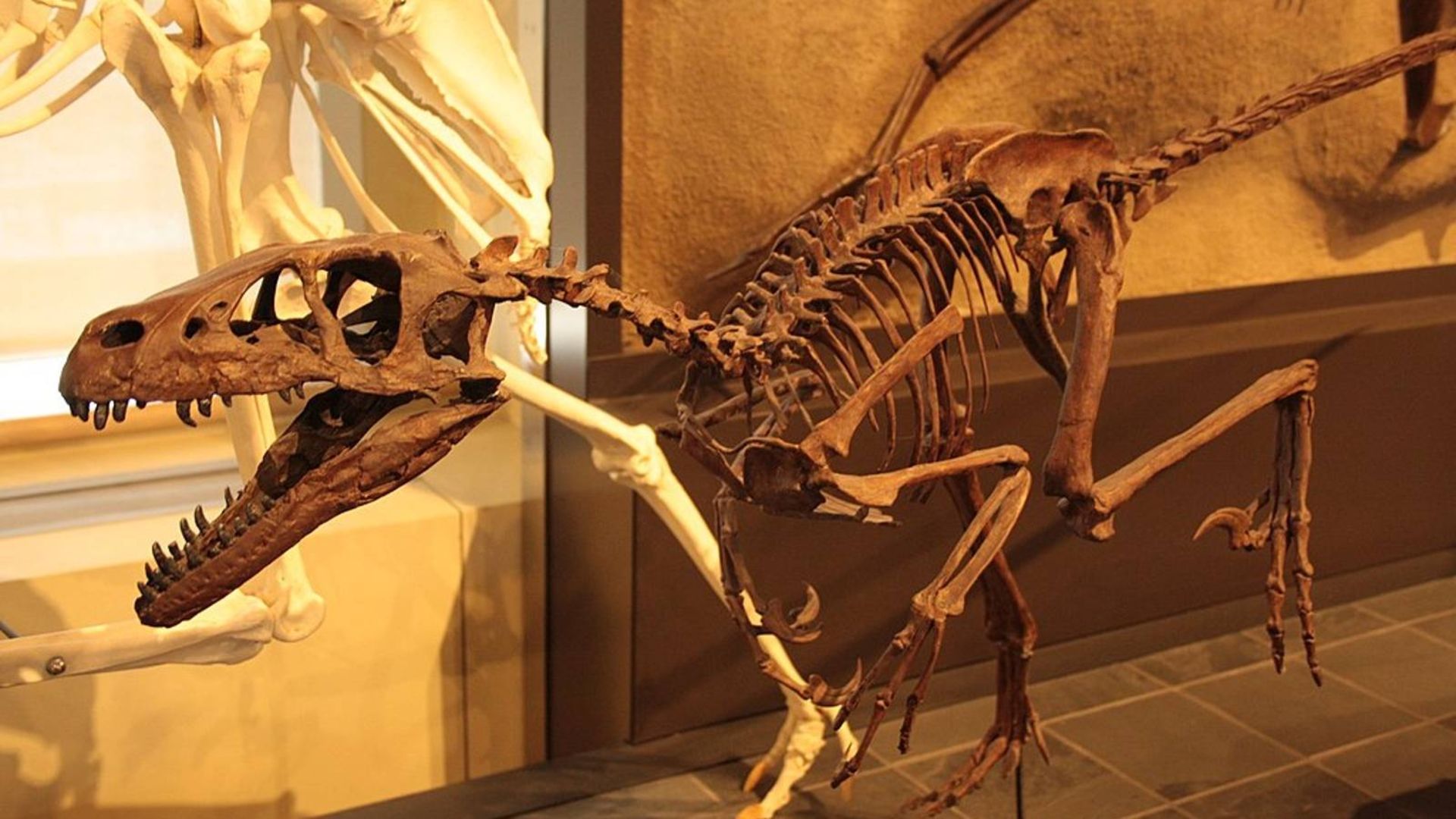 Dromisaurus skeleton that belongs to 75 million years ago
Dromisaurus skeleton that belongs to 75 million years ago
Bezos and his companions aren’t the only strange things that Blue Origin has sent into space. On May 20, 2021, the company launched about 200 pieces of dinosaur bones into space on another New Shepherd rocket. These bones with the age of 66 to 70 million years probably belonged to Dromisaurus; A bird-like hunter that was about two meters long and its height from the ground to the hip was 0.6 meters. After returning to Earth, the bones were auctioned off for charity.
But these pieces were not the first dinosaur bones to be sent into space. In 1985, a piece of bone and an eggshell of Mayasura flew into space aboard NASA’s space shuttle Challenger. In 1998, the 210-million-year-old Sylophysis skull flew aboard Challenger’s successor, the Space Shuttle Endeavour. Parts of the Tyrannosaurus rex were also launched into space on the first test flight of NASA’s Orion spacecraft.
14 strange things we have sent into space
Tardigrades
 Tardigrid under the microscope
Tardigrid under the microscope
Many different animals have been sent into space. Some of them you probably already know about, like dogs, replicas, monkeys, and rodents. But many other creatures such as cats, frogs, fruit flies, turtles, fish, and mermaids have also made their way into space.
However, the strangest creatures ever sent into space are probably tardigrades. Tardigrades, also known as water bears, are famous for their ability to survive in very harsh environments.
In 2007, tardigrades also became the first creatures to survive direct exposure to space, according to the European Space Agency. These animals were sealed in the outer part of the Russian spacecraft Photon M3, which was orbiting the Earth for 12 days, and surprisingly, they survived.
A supplementary article published in 2008 in the journal Current Biology showed that 68% of tardigrades managed to survive extreme cold, dehydration, and cosmic ray bombardment.
Gorilla suit
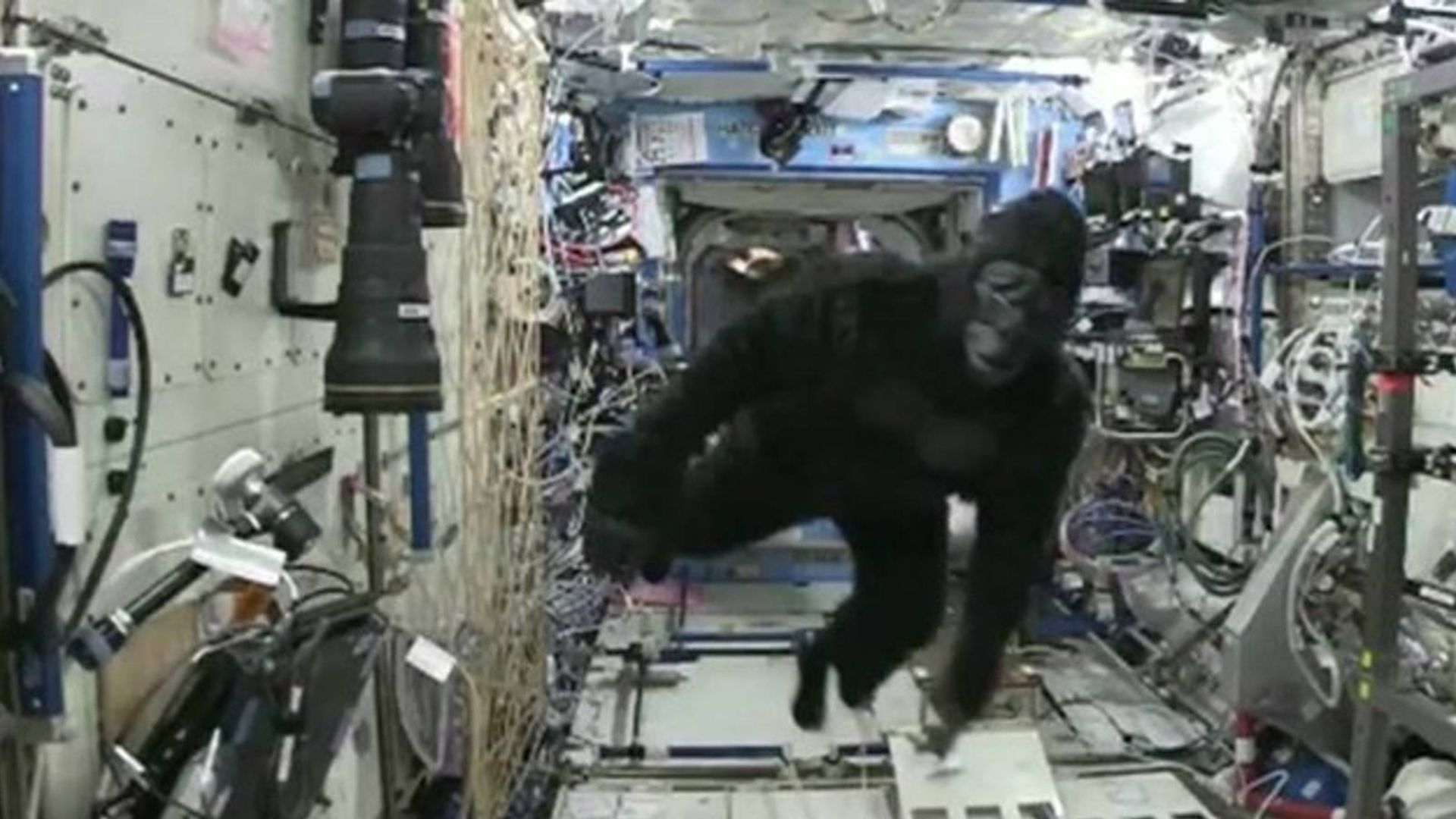 Astronaut Scott Kelly in a gorilla suit on the International Space Station.
Astronaut Scott Kelly in a gorilla suit on the International Space Station.
Astronauts also seem to enjoy dressing up as animals in space. In 2016, Mark Kelly, a retired astronaut and current US senator, smuggled a gorilla suit to the International Space Station for his twin brother. This led to a much-watched video in which Scott surprises and follows the British astronaut courier team into the modules of the International Space Station. Mark Kelly first tried to smuggle the gorilla suit to Scott in 2015, but the SpaceX Falcon 9 rocket in which the suit was hidden exploded shortly after liftoff.
Skywalker’s lightsaber
 Astronaut Jim Reilly with Luke Skywalker’s lightsaber and the robot Arto-DeTo before taking this famous device into space.
Astronaut Jim Reilly with Luke Skywalker’s lightsaber and the robot Arto-DeTo before taking this famous device into space.
The original Star Wars trilogy, published between 1977 and 1983, inspired a generation of astronauts and space scientists. Therefore, it is not surprising that one of the most famous props of the movie, Luke Skywalker’s lightsaber, finally made its way into space.
This lightsaber was launched in 2007 by a team of astronauts who delivered the Harmony Module (known as Node 2) to the International Space Station and assembled it. The launch coincided with the 30th anniversary of the first Star Wars film (A New Hope), but the lightsaber was actually Luke’s second lightsaber (Green Sword), which appeared in the third film, Return of the Jedi.
Luke’s lightsaber isn’t the only Star Wars relic sent into space. In 2017, as part of the marketing for The Last Jedi, the second film in the newest trilogy, Disney sent a version of droid BB8 (the orange spherical robot) to astronauts on the International Space Station to play with.
14 strange things we have sent into space
Pizza delivery
In 2001, Pizza Hut became the first company to deliver food into space by sending pizza to the International Space Station on a rocket carrying supplies for astronauts. The recipient of the pizza was Yuri Osachev, who was filmed eating this delicious food with other astronauts.
The record-breaking delivery was a bold marketing move that cost the company more than $1 million ($1.7 million in today’s dollars). But the chefs who cooked the pizza had to take special considerations into account for its unusual journey: extra seasoning was added because astronauts might lose their sense of taste in space, and salami was used instead of pepperoni because it had a longer shelf life. and it was necessary for the pizza to be completely prepared before the launch time.
Interestingly, at the time, NASA astronauts on the International Space Station were prohibited from eating pizza due to the agency’s strict corporate sponsorship rules.
Pizza is not the only food that has been successfully delivered to the International Space Station. In December 2021, Uber Eats announced that it had delivered food to residents through Yusaku Maezawa, a Japanese entrepreneur and space tourist who made a short trip to the space station. This dish included fish with soy paste and chicken with bamboo shoots.
Amelia Earhart watch
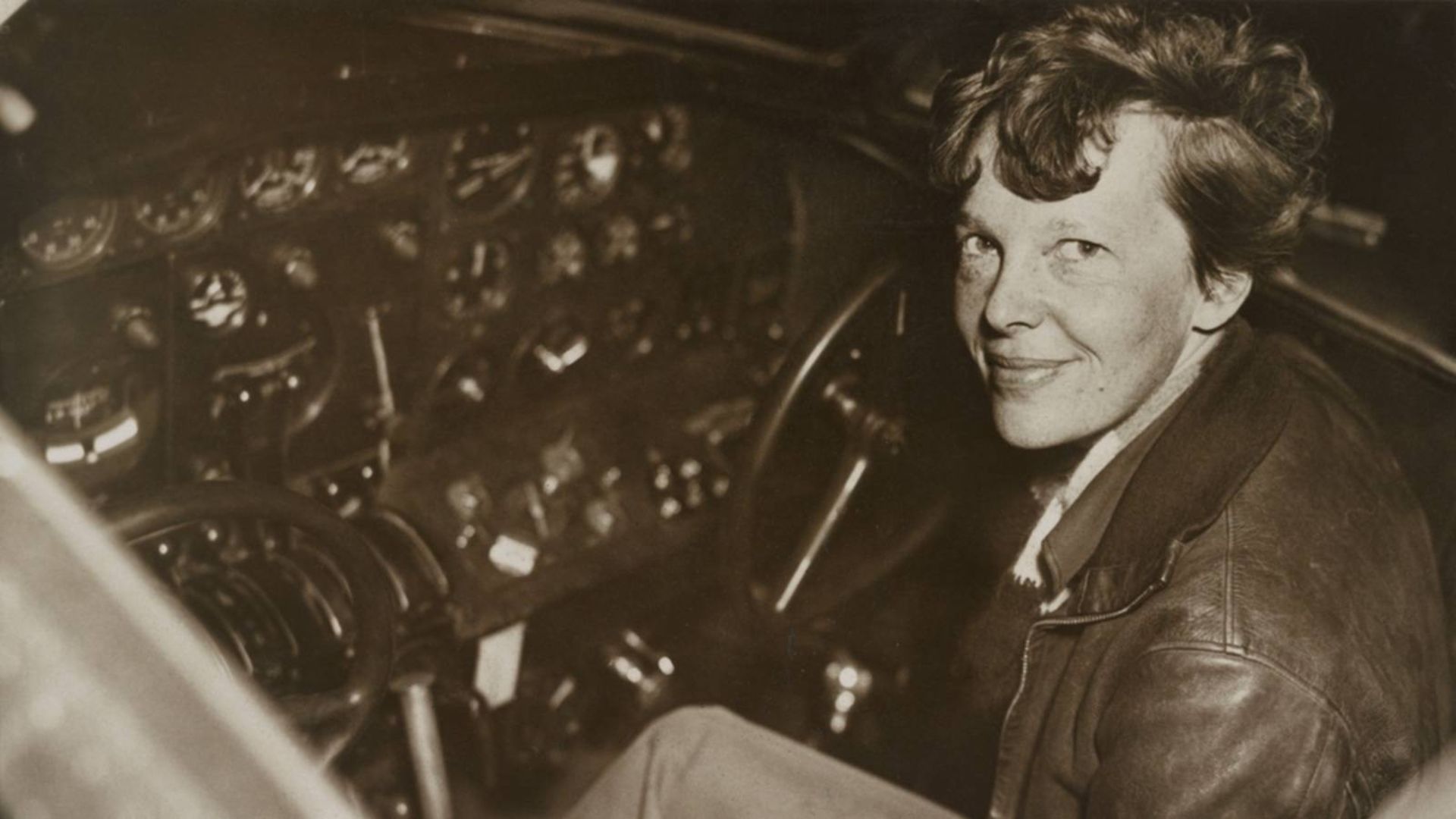 Amelia Earhart in the cockpit of Lockheed Electra in 1937
Amelia Earhart in the cockpit of Lockheed Electra in 1937
Amelia Earhart was an innovative aviator who in 1932 became the first woman to fly solo across the Atlantic Ocean. Amelia Earhart won other firsts and broke several aviation records. This pioneer pilot got lost and probably died in 1937 when he was trying to circumnavigate the earth. The plane and his body were never found.
Earhart’s story inspired many young female aviators and astronauts, including NASA astronaut Shannon Walker, who in 2010 took Earhart’s wristwatch, which she wore on her famous flight across the Atlantic Ocean, to the International Space Station (Earhart wore another watch on her fatal journey). had in hand).
Parts of the Wright Brothers’ airplane
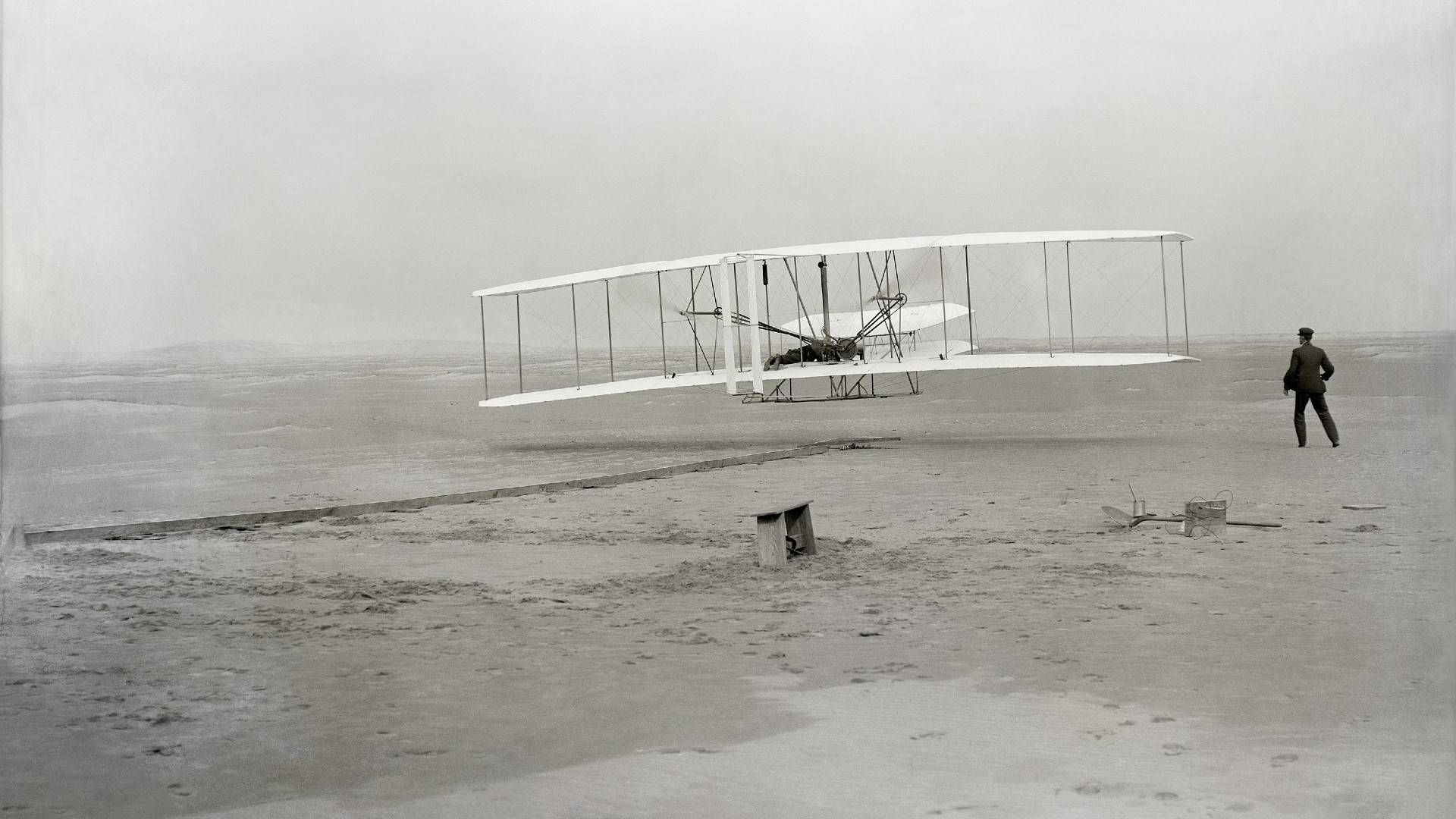 Wright brothers airplane on December 17, 1903
Wright brothers airplane on December 17, 1903
Parts of Orville and Wilbur Wright’s first airplane, the Wright Bird, made their way into space on two separate occasions. This biplane, also known as the Kitty Hawk, is famous for being the first aircraft to sustainably fly with humans before crashing. On December 17, 1903, the Wright brothers’ airplane made four short flights, the longest of which lasted only 59 seconds, and the airplane traveled 260 meters during it.
In 1969, Neil Armstrong, the first person to walk on the moon, took pieces of Wright’s plane with him during NASA’s Apollo 11 mission. These pieces, included four pieces of Hopima’s wing fabric and two pieces of its propeller, which Armstrong took to the moon in his “personal preference kit”. The mentioned kit was a small bag that each astronaut could carry with him on the lunar rover.
And in 2021, another piece of fabric landed on Mars with the Perseverance rover and the Ingenuity helicopter. The part belonging to the plane is embedded under the solar panels of the helicopter. This Mars rover has made more than 50 flights on the red planet since then.
14 strange things we have sent into space
Musical Instruments
 Astronaut Jessica Meyer playing the saxophone on the International Space Station
Astronaut Jessica Meyer playing the saxophone on the International Space Station
For astronauts living on the ISS, spending long periods away from the comforts of Earth can take a psychological toll. To overcome these obstacles, astronauts have taken instruments such as keyboards, guitars, flutes, bells, reeds, saxophones, and even didgeridoo with them into space.
For the most part, playing an instrument in space is like playing it on Earth, but microgravity can cause problems. For example, if astronauts on the International Space Station play a wind instrument such as a flute, they have to curl their legs to avoid being pushed back by the air they blow out of the instrument.
However, there are safety concerns about using instruments such as guitars on the space station, as they are flammable and must therefore be stored safely when not in use. Also, it is expensive to take instruments into space and it costs $4,500 to send each kilogram of cargo into space.
Zero gravity markers
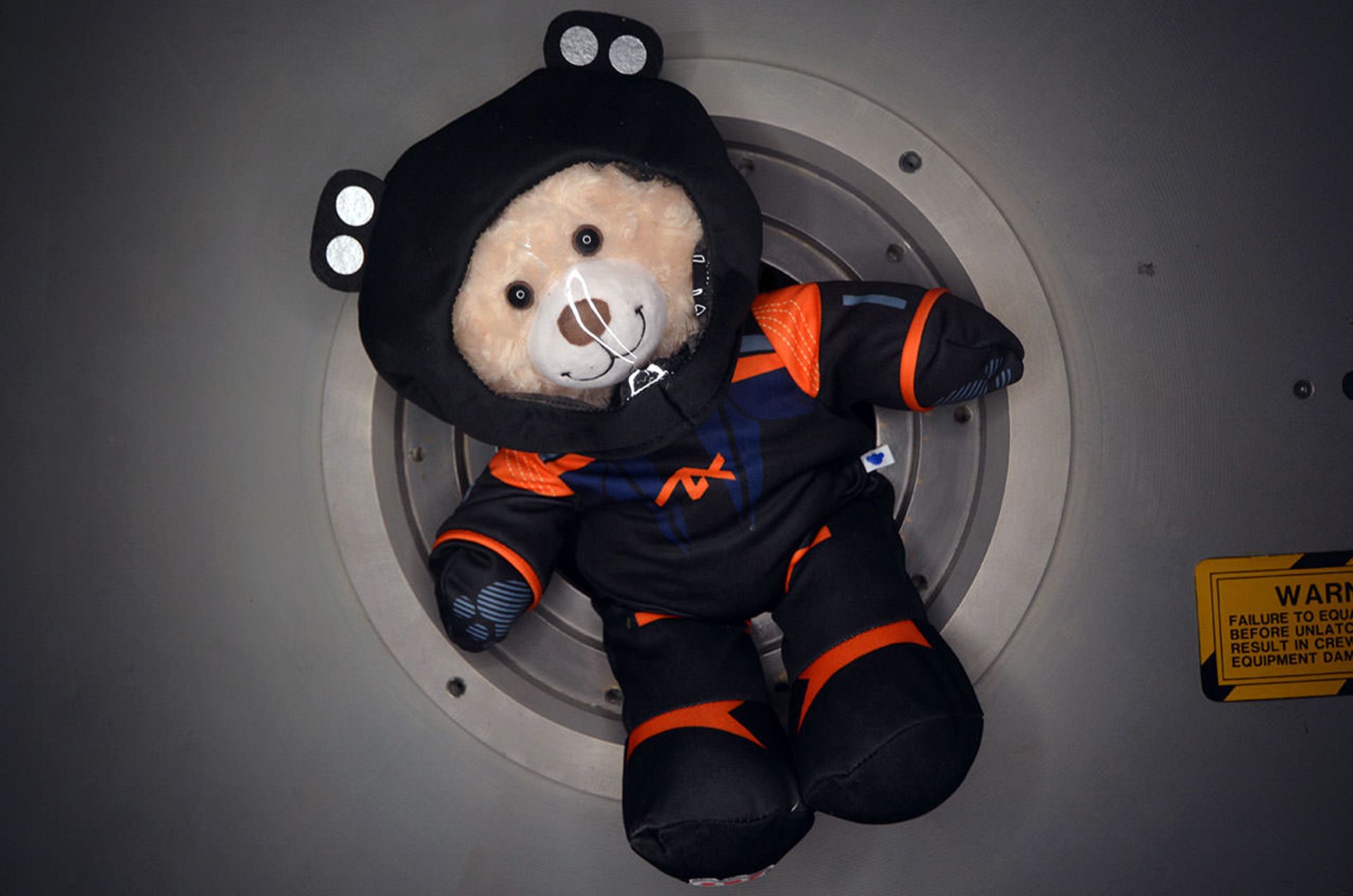 Puppet Rooster, zero gravity indicator of Axiom 2 mission.
Puppet Rooster, zero gravity indicator of Axiom 2 mission.
A common tradition among astronauts is that they each choose an unusual object as their “zero-gravity marker” and take it into space. As the gravity decreases, this object will hover around them. Examples of these markers include the Einstein doll, Snoopy the Dog, Baby Yoda (Grogo), toy dinosaurs, plushies, the penguin doll, and the Baselighter doll.


You may like
-




Europa Clipper, NASA’s flagship probe was launched
-

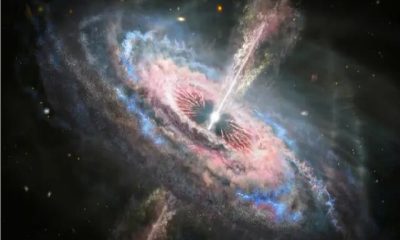


Dark matter and ordinary matter can interact without gravity!
-




James Webb Space Telescope deepens cosmology’s biggest controversy
-

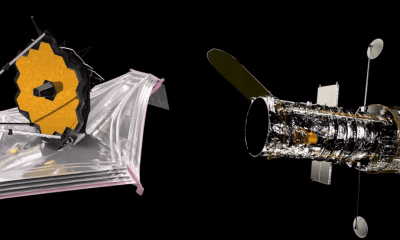


James Webb vs. Hubble
-

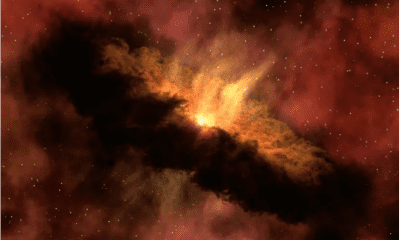


There is more than one way for planets to be born
-




Why is Jupiter one of the first targets of the James Webb Space Telescope?


Europa Clipper, NASA’s flagship probe was launched
After years of waiting, NASA’s Europa Clipper probe was finally launched on Monday at 7:36 p.m. Iran time from the Kennedy Space Center on top of SpaceX’s Falcon Heavy rocket and began a major astrobiology mission to Europa, the potentially habitable moon of Jupiter.
As SpaceX’s massive rocket powered by 27 powerful Merlin engines lifted off from pad 39A, NASA live broadcast reporter Dron Neal said, “The launch of Falcon Heavy with Europa Clipper will reveal the secrets of the vast ocean beneath the icy crust of Europa, Jupiter’s moon. It has been hidden, it will reveal.”
The engines of the two side boosters of the Falcon Heavy were shut down and separated from the central booster approximately three minutes after the flight. The central booster continued to fly for another minute, and then in the fourth minute of the launch, the separation of the upper stage from the first stage was confirmed. Finally, 58 minutes later, Europa Clipper was injected into interplanetary orbit as scheduled. A few minutes later, the mission team made contact with the probe, and people in the control room cheered and applauded.
Falcon Heavy’s unique launch
The launch of NASA’s new probe was delayed due to some mishaps. NASA and SpaceX initially planned to launch the Europa Clipper mission on Thursday, October 10; But with powerful Hurricane Milton hitting Florida’s Gulf Coast on Wednesday evening, a delay in the launch became inevitable. NASA shut down Kennedy Space Center to deal with the storm, and Europa Clipper was placed inside SpaceX’s hangar near Launch Pad 39A.
The recent launch was Falcon Heavy’s 11th flight overall and its second interplanetary mission. Also, this was the first flight of the Falcon Heavy, when all three boosters of the first stage of the rocket were deployed.
Typically, the Falcon Heavy and Falcon 9 first-stage boosters store enough fuel to perform landing maneuvers for recovery and reuse in the future; But Europa Clipper needed all the power that Falcon Heavy could provide in order to make it on its way to the Jupiter system.
A long way to the launch pad
In late 2015, the US Congress directed NASA to launch Europa Clipper using the Space Launch System (SLS), NASA’s massive rocket. SLS was still under construction at the time and was several years away from reaching the launch pad. The delay in completing the construction of this powerful rocket and NASA’s need to assign at least the first three versions of SLS to the Artemis lunar mission caused the Europa Clipper launch date to be in an aura of uncertainty.
In the 2021 House budget draft for NASA, the agency was directed to launch Europa Clipper by 2025 and, if possible, with SLS. However, due to the unavailability of the Space Launch System, NASA had to go to SpaceX’s Falcon Heavy. This decision was not without cost. As the most powerful rocket ever used in an operational mission, SLS can send Europa Clipper directly to the Jupiter system in less than three years.
Europa Clipper will use the gravitational assistance of Mars and Earth on its way to the Jupiter system
Now, even in Falcon Heavy’s fully disposable mode, the Clipper’s trip to Europe takes almost twice as long. The probe should make a flyby of Mars in February 2025 and a flyby of Earth in December 2026 to gain enough speed to reach its destination in April 2030.
Missile problems were not the only obstacles facing Europa Clipper on its way to the launch pad. For example, the rising costs of this five billion dollar probe forced NASA to cancel the construction of one of the probe’s science instruments. This instrument, named “Identification of Europa’s internal features using a magnetometer” (ICEMAG), was designed to measure Europa’s magnetic field.
Then in May 2024, NASA found that transistors similar to those used in Europa Clipper, which are responsible for regulating the probe’s electricity, were “failing at lower-than-expected radiation doses.” Following this discovery, NASA conducted more tests on the transistors and finally concluded in late August that these components could support the initial mission in the radiation-rich environment around Jupiter.
Ambitious mission to a fascinating moon

NASA/Jet Propulsion Laboratory-Caltech
Europa Clipper is one of NASA’s most exciting and ambitious flagship missions, and it has impressive features. For example, the mission probe is the largest spacecraft NASA has ever built for a planetary mission. Europa Clipper weighed almost 6,000 kg at the time of launch and will be more than 30 meters long (bigger than a basketball court) by opening its huge solar panels in space.
Clipper’s Europa destination is also a prominent location: Europa, one of Jupiter’s four Galilean moons. The moon is covered with an icy outer shell, which scientists believe hides a vast ocean of salty liquid water. For this reason, Europa is considered one of the best places in the solar system to support alien life.
In early 2012, studies began to look for potential plumes of water rising from Europa’s surface. Some researchers theorize that those water columns and vents from which the columns protrude may contain evidence of life living beneath the moon’s icy crust. However, NASA scientists have made it clear that Europa Clipper is not looking for extraterrestrial life in Europa; Rather, this probe will only investigate the potential of the submoon water environment to support life.
“If there’s life on Europa, it’s going to be under the ocean,” Bonnie Buratti, senior Europa Clipper scientist at NASA’s Jet Propulsion Laboratory, said in September. As a result, we cannot see it.” “We will be looking for organic chemicals that are prerequisites for life on the surface of the moon,” Borrati added. There are things we can observe; such as DNA or RNA; But we don’t expect to see them. As a result, [the probe] is only looking for habitable environments and evidence for the ingredients of life, rather than life itself.”
NASA scientists have made it clear that Europa Clipper is not looking for extraterrestrial life in Europa
Europa Clipper will collect data using a suite of nine scientific instruments, including visible and thermal cameras, several spectrometers, and special equipment to identify Europa’s magnetic environment. As stated on NASA’s Europa Clipper page, the probe will help scientists achieve three main goals:
- Determining the thickness of Europa’s ice sheet and understanding how Europa’s ocean interacts with the lunar surface.
- Investigating the composition of Europa’s ocean to determine whether it has the materials necessary to form and sustain life.
- Studying the formation of Europe’s surface features and discovering signs of recent geological activities; such as the sliding of crustal plates or the discharge of water columns in space.
Europa Clipper also transports Earth’s culture to the Solar System. A piece called “In Praise of Mystery: A Poem for Europe” by Edda Lemon, a famous American poet, is engraved in the artist’s own handwriting on a metal plate. In addition, the probe carries a coin-sized chip that contains the names of 2.6 million inhabitants of planet Earth.
6-year journey

Johns Hopkins University Applied Physics
If all goes according to plan, Europa Clipper will enter Jupiter’s orbit in April 2030. When the probe gets there, it will use up 50-60% of its 2,722 kg of fuel by performing an injection maneuver for 6-8 hours.
The injection maneuver puts Europa Clipper in an elliptical orbit around the gas giant. A series of long maneuvers will then be performed to align the trajectory so that the probe can fly by Europa more than 45 times and study it closely. In fact, Europa Clipper will remain around Jupiter throughout its mission; Because according to the launch environment of Europa, it will be very dangerous for the spacecraft to go around the moon.
If all goes according to plan, Europa Clipper will enter Jupiter’s orbit in April 2030
The first flight over Europe will not take place before the spring of 2031. NASA will use the first pass to make further corrections to Europa Clipper’s trajectory in preparation for the probe’s first science mission. With the start of scientific flybys in May 2031, Europa Clipper will aim its array of sensors towards the far hemisphere from Jupiter and will approach the surface of the moon up to 25 km. The second science campaign will begin two years later, in May 2033, in the Jupiter-facing hemisphere of Europa.
The end of the Europa Clipper mission is set for September 2034. At that time, NASA will crash the spacecraft into Ganymede, another Galilean moon of Jupiter. This disposal strategy was chosen because Ganymede is considered a relatively poor candidate to host life, and the mission team wanted to make sure they did not contaminate potentially life-hosting Europa with terrestrial microbes.
Space
Dark matter and ordinary matter can interact without gravity!
Published
2 weeks agoon
01/10/2024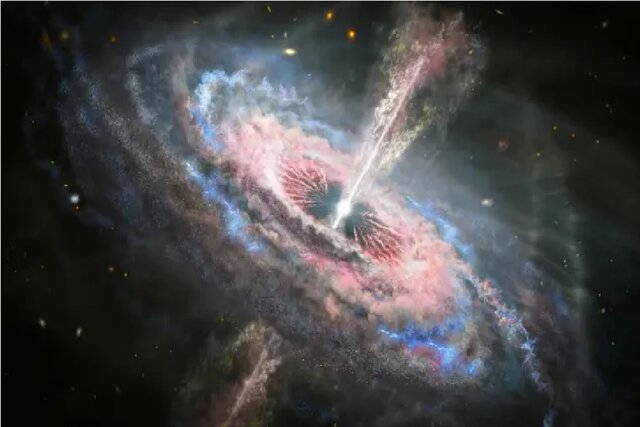

Preposition: For each; per.
Noun: A topology name.
Noun: which has mass but which does not readily interact with normal matter except through gravitational effects.
Adverb: Beyond all others.
Preposition: For each; per.
Noun: A topology name.
Dark matter and ordinary matter can interact without gravity!
Why is dark matter associated with the adjective “dark”? Is it because it harbors some evil forces of the universe or hidden secrets that scientists don’t want us to know? No, it is not. Such fanciful assumptions may sound appealing to a conspiracy theorist, but they are far from the truth.
Dark matter is called dark because it does not interact with light. So when dark matter and light collide, they pass each other. This is also why scientists have not been able to detect dark matter until now; it does not react to light.
Although it has mass and mass creates gravity, this means that dark matter can interact with normal matter and vice versa. Such interactions are rare, and gravity is the only known force that causes these two forms of matter to interact.
However, a new study suggests that dark matter and ordinary matter interact in ways other than gravity.
If this theory is correct, it shows that our existing models of dark matter are somewhat wrong. In addition, it can lead to the development of new and better tools for the detection of dark matter.
Read more: There is more than one way for planets to be born
A new missing link between dark and ordinary matter
Dark matter is believed to have about five times the mass of normal matter in our universe, which helps hold galaxies together and explains some of the motions of stars that don’t make sense based on the presence of visible matter alone.
For example, one of the strongest lines of evidence for the existence of dark matter is the observation of rotation curves in galaxies, which show that stars at the outer edges of spiral galaxies rotate at rates similar to those near the center. These observations indicate the presence of an invisible mass.
Also, for their study, the researchers studied six ultra-dim dwarf (UFD) galaxies located near the Milky Way. However, in terms of their mass, these galaxies have fewer stars than they should. This means they are mostly made up of dark matter.
According to the researchers, if dark matter and normal matter interact only through gravity, the stars in these UFDs should be denser in the centers and more spread out toward the edges of the galaxies. However, if they interact in other ways, the star distribution looks different.
The authors of the study ran computer simulations to investigate both possibilities. When they tested this for all six ultra-dim dwarf (UFD) galaxies, they found that the distribution of stars was uniform, meaning that the stars were spread evenly across the galaxies.
This was in contrast to what is generally observed for gravitational interactions between dark matter and normal matter.
What causes this interaction?
The results of the simulations showed that gravity is not the only force that can make dark matter and normal matter interact. Such an interaction has never been observed before, and it could change our understanding of dark matter and dark energy.
However, this study has a major limitation. What caused the interaction between the two forms of matter is still a mystery. While the current study provides tantalizing hints of a novel interaction, its exact nature and underlying causes remain unknown. Hopefully, further research will clarify the details of such interactions.
This study was published in The Astrophysical Journal Letters.
Space
James Webb Space Telescope deepens cosmology’s biggest controversy
Published
3 weeks agoon
26/09/2024

How the James Webb Space Telescope deepens cosmology’s biggest controversy
Summary of the article:
- Almost a century ago, Edwin Hubble discovered the expansion of the universe and calculated the expansion rate or the cosmic constant.
- Since Hubble, many groups have tried to measure the expansion rate of the universe. However, the values they obtained differed from the theoretical predictions. This difference is called Hubble tension.
- Scientists today use three methods to measure the expansion rate of the universe: Cephasian variable stars, TRGB red giant stars, and JAGB asymptotic giants.
- However, the Hubble tension still exists, indicating that the methods for calculating the Hubble constant suffer from a systematic flaw.
- Researchers hope to be able to use the James Webb telescope in the coming years to achieve more accurate measurements of the universe’s expansion rate and thus resolve the Hubble tension.
Almost a century ago, Edwin Hubble discovered that the universe was getting bigger. However, today’s measurements of how fast the universe is expanding are contradictory. These discrepancies show that our understanding of the laws of physics may be incomplete. On the other hand, everyone expected the sharp eyes of the James Webb telescope to bring us closer to the answer to the riddle; But a new analysis of the telescope’s long-awaited observations once again reflects inconsistent expansion rates from different types of data, while pointing to possible sources of error.
Two competing groups have led efforts to measure the rate of expansion of the universe, known as Hubble’s constant, or H0. A group led by Adam Reiss of Johns Hopkins University, relying on the known constituents of the universe and the governing equations, has consistently calculated the Hubble constant to be approximately 8 percent higher than the theory predicts the universe’s expansion rate. This discrepancy, known as the Hubble tension, indicates that the model of the cosmological theory may have missed some elements such as raw materials or effects that speed up the expansion of the universe. Such an element can be a clue to a more complete understanding of the world.
This spring, Reiss and his team published new measurements of the Hubble constant based on data from the James Webb Telescope and found a value consistent with their previous estimates. However, a rival group led by Wendy Friedman of the University of Chicago warns that more precise measurements are needed. The team’s measurements of the Hubble constant are closer to the theoretical estimate than Riess’ calculations, suggesting that the Hubble stress may not be real.
Since the commissioning of the James Webb Telescope in 2022, the astrophysical community has been waiting for Friedman’s multidimensional analysis based on telescope observations of three types of stars. The results are now as follows: the two-star types provide estimates of the Hubble constant that are in line with the theoretical prediction; While the results of the third star, which is the same type used by Reiss, are consistent with his team’s higher estimates of Hubble’s constant. According to Friedman, the fact that the results of the three methods are contradictory does not mean that there are unknown physical foundations, but that there are some systematic errors in the calculation methods.
Contradictory world
The difficult part of measuring cosmic expansion is measuring the distance of space objects. In 1912, American astronomer Henrietta Levitt first used pulsating stars known as Cephasian variables to calculate distances. These stars flicker at a rate proportional to their intrinsic luminosity. By understanding the luminosity or radiant power of a Cephasian variable, we can compare it with its apparent brightness or dimming to estimate its galaxy’s distance from us.
Edwin Hubble used Levitt’s method to measure the distances to a set of galaxies hosting the Cephasian variable, and in 1929 he noticed that the galaxies that are farther away from us are moving away faster. This finding meant the expansion of the universe. Hubble calculated the expansion rate to be a constant value of 500 km/s per megaparsec. In other words, two galaxies that are 1 megaparsec or approximately 3.2 million light years apart are moving away from each other at a speed of 500 km/s.
As progress was made in calibrating the relationship between the pulsation frequency of Cepheids and their luminosity, measurements of the Hubble constant improved. However, since the Cephasian variables are very bright, the whole approach used has limitations. Scientists need a new way to measure the distance of galaxies from each other in the infinite space.
In the 1970s, researchers used Cephasian variables to measure the distance to bright supernovae, and in this way they achieved more accurate measurements of the Hubble constant. At that time, as now, two research groups undertook the measurements, and using supernovae and Cephasian variable stars, they achieved contradictory values of 50 km/s per megaparsec and 100 km/s per megaparsec. However, no agreement was reached and everything became completely bipolar.
 Edwin Hubble, the American astronomer who discovered the expansion of the universe, stands next to the Schmidt telescope at the Palomar Observatory in this photo from 1949.
Edwin Hubble, the American astronomer who discovered the expansion of the universe, stands next to the Schmidt telescope at the Palomar Observatory in this photo from 1949.
The launch of the Hubble Space Telescope in 1990 gave astronomers a new and multi-layered view of the universe. Friedman led a multi-year observing campaign with Hubble, and in 2001 he and his colleagues estimated the expansion rate to be 72 km/s/Mpa with an uncertainty of at most 10%.
A Nobel laureate for the discovery of dark energy, Reiss got into the expansion game a few years later. In 2011, his group found the Hubble constant to be 73 with a three percent uncertainty. Soon after this, cosmologists excelled in another way. In 2013, they used Planck’s observations of light left over from the early universe to determine the exact shape and composition of the early universe.
In the next step, the researchers connected their findings to Einstein’s theory of general relativity and developed a theoretical model to predict the current state of the universe, up to approximately 14 billion years into the future. Based on these calculations, the universe should be expanding at an approximate rate of 67.4 km/s per megaparsec with an uncertainty of less than one percent.
Reese’s team measurement remained at 73, even with the improved accuracy. This higher value indicates that the galaxies today are moving away from each other at a faster rate than theoretically expected. This is how the Hubble tension was born. According to Reiss, today’s Hubble tension shows us that something is missing in the cosmological model.
The missing factor could be the first new element in the universe to be discovered since dark energy. Theorists still have doubts about the identity of this agent. Perhaps this force is some kind of repulsive energy that lasted for a short time in the early universe, or perhaps it is the primordial magnetic fields created during the Big Bang, or perhaps what is being missed is more about ourselves than the universe.
Ways of seeing
Some cosmologists, including Friedman, suspected that unknown errors were to blame for Hubble’s tension. For example, Cephasian variable stars are located in the disks of younger galaxies in regions full of stars, dust, and gas. Even with Hubble’s fine resolution, you don’t see a single Cephasian variable, according to George Afstatio, an astrophysicist at the University of Cambridge. Rather, you see it overlapping with other stars. This density of stars makes measurements of brightness difficult.
When the James Webb Telescope launches in 2021, Reiss and his colleagues will use its powerful infrared camera to peer into the crowded regions that host the Cephasian variables. They wanted to know whether the claims of Friedman and other researchers about the effect of the area’s crowding on the observations were correct.
 The 6.5-meter multi-section mirror of the James Webb Space Telescope at NASA’s Goddard Space Flight Center in Maryland. This mirror passed various test stages in 2017.
The 6.5-meter multi-section mirror of the James Webb Space Telescope at NASA’s Goddard Space Flight Center in Maryland. This mirror passed various test stages in 2017.
When the researchers compared the new numbers to distances calculated from Hubble data, they saw a surprising match. The latest results from the James Webb telescope confirmed the Hubble constant measured by the Hubble telescope a few years ago: 73 km/s/Mpa with a difference of one kilometer or so.
Concerned about crowding, Friedman turned to alternative stars that could serve as distance indicators. These stars are found in the outer reaches of galaxies and away from the crowd. One of those stars belongs to the group ” Red Giant Branch ” or TRGB for short. A red giant is an old star with a puffy atmosphere that shines brightly in the red light spectrum. As a red giant ages, it eventually burns helium in its core, and at this point, the star’s temperature and brightness suddenly decrease.
A typical galaxy has many red giants. If you plot the brightness of these stars against their temperature, you reach a point where the brightness drops off. The star population before this brightness drop is a good distance indicator; Because in each galaxy, such a population has a similar distribution of luminosity. By comparing the brightness of these star populations, astronomers can estimate their relative distances.
The Hubble tension shows that the standard model of the cosmos is missing something
Regardless of the method used, physicists must calculate the absolute distance of at least one galaxy as a reference point in order to calibrate the entire scale. Using TRGB as a distance index is more complicated than using Kyphousian variables. MacKinnon and colleagues used nine wavelength filters from the James Webb telescope to understand how brightness relates to their color.
Astronomers are also looking for a new indicator: carbon-rich stars that belong to a group known as the “Jay region asymptotic giant” (JAGB). These stars are far from the bright disk of the galaxy and emit a lot of infrared light. However, it was not possible to observe them at long distances until James Webb’s launch.
Friedman and his team have applied for observation time with the James Webb Space Telescope in order to observe TRGBs and JAGBs, along with more fixed spacing indices and Cephasian variables, in 11 galaxies.
The vanishing solution
On March 13, 2024, Friedman, Lee, and the rest of the team meet in Chicago to find out what they’ve been hiding from each other. Over the past months, they were divided into three groups, each tasked with measuring distances to 11 galaxies using one of three methods: Cephasian variable stars, TRGBs, and JAGBs.
These galaxies also host related types of supernovae, so their distances can calibrate the distances of supernovae in many more distant galaxies. The rate at which galaxies move away from us divided by their distance gives the value of the Hubble constant.
 Wendy Friedman at the University of Chicago is trying to fit the James Webb Telescope observations into the Standard Cosmological Model.
Wendy Friedman at the University of Chicago is trying to fit the James Webb Telescope observations into the Standard Cosmological Model.
Three groups of researchers calculated distance measures with a unique, random counterbalancing value added to the data. During the face-to-face session, they removed those values and compared the results.
All three methods obtained similar distances with three percent uncertainty. Finally, the group calculated three values of Hubble’s constant for each distance index. All values were within the theoretical prediction range of 67.4. Therefore, Hubble’s tension seemed to be resolved. However, they ran into problems with further analysis to write the results.
The JAGB analysis was good, But the other two were wrong. The team found that there were large error bars in the TRGB measurements. They tried to minimize the errors by including more TRGBs; But when they started doing this, they found that the distance to the galaxies was less than they first thought. This change caused the value of Hubble’s constant to increase.
Friedman’s team also discovered an error in Cephaus’s analysis: in almost half of the pulsating stars, the term crowd was applied twice. Correcting this error increased the value of Hubble’s constant significantly. Hubble’s tension was revived.
Finally, after efforts to fix the errors, the researchers’ paper presents three distinct values of Hubble’s constant. The JAGB measurement yielded a result of 67.96 km/s/megaparsec. The TRGB result was equal to 69.85 with similar error margins. Hubble’s constant was obtained at a higher value of 72.05 in the Kyphousian variable method. In this way, different hypotheses about the characteristics of these stars caused Hubble’s stress value to vary from 69 to 73.
By combining the aforementioned methods and uncertainties, the average Hubble stress value equal to 69.96 was obtained with an uncertainty of four percent. This margin of error overlaps with the theoretical prediction of the expansion rate of the universe, as well as the higher value of Tim Reiss.
Tensions and resolutions
The James Webb Space Telescope has provided methods for measuring the Hubble constant. The idea is simple: closer galaxies look more massive; Because you can make out some of their stars, while more distant galaxies have a more uniform appearance.
A method called gravitational convergence is more promising. A massive galaxy cluster acts like a magnifying glass, bending and magnifying the image of a background object, creating multiple images of the background object when its light takes different paths.
Brenda Fry, an astronomer at the University of Arizona, is leading a program to observe seven clusters with the James Webb Space Telescope. Looking at the first images they captured last year of the G165 cluster, Fry and his colleagues noticed three spots that were not previously seen in the images. These three points were actually separate images of a supernova that was located in the background of the aforementioned cluster.
After repeating the observation several times, the researchers calculated the difference between the arrival times of the three gravitational lensing images of the supernova. This time delay is proportional to Hubble’s constant and can be used to calculate this value. The group obtained an expansion velocity of 75.4 km/s/Mpa with a large uncertainty of 8.1%. Fry expects the error bars to correct after several years of similar measurements.
Both Friedman’s and Reiss’ teams predict that they will be able to get a better answer with James Webb’s observations in the coming years. “With improved data, the Hubble tension will eventually be resolved, and I think we’ll get to the bottom of it very quickly,” Friedman says.


Biography of Geoffrey Hinton; The godfather of artificial intelligence


The Secret of the Hummingbird’s Amazing Adaptation


Europa Clipper, NASA’s flagship probe was launched


How did accidental release cause the 1977 Russian flu?


Everything about Cybercube and Robo Van; Elon Musk’s robotic taxis


The Strawberry Project; The OpenAI artificial intelligence model


The biography of Andy Rubin, the creator of Android


Everything you need to know about the Windows Blue Screen of Death


Why doesn’t Jupiter have big and bright rings like Saturn?


How to prevent your location from being revealed through photos?
Popular
-



 Technology1 year ago
Technology1 year agoWho has checked our Whatsapp profile viewed my Whatsapp August 2023
-



 Technology1 year ago
Technology1 year agoSecond WhatsApp , how to install and download dual WhatsApp August 2023
-



 Technology1 year ago
Technology1 year agoHow to use ChatGPT on Android and iOS
-



 AI2 years ago
AI2 years agoUber replaces human drivers with robots
-



 Technology1 year ago
Technology1 year agoThe best Android tablets 2023, buying guide
-



 Technology1 year ago
Technology1 year agoThe best photography cameras 2023, buying guide and price
-



 Humans2 years ago
Humans2 years agoCell Rover analyzes the inside of cells without destroying them
-



 Technology1 year ago
Technology1 year agoHow to prevent automatic download of applications on Samsung phones
